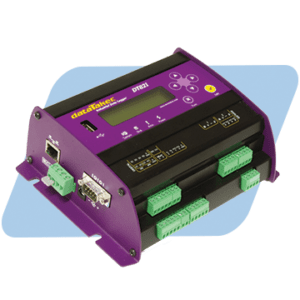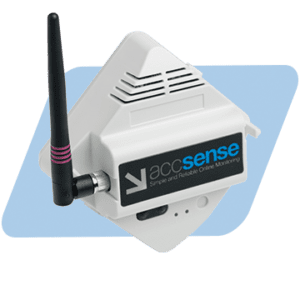 We often receive requests for data logging systems that can sample the inputs 100’s or 1000’s of times a second. While we offer several different systems that can provide kHz sample rates, we often try to get a better understanding of the application to see if this is necessary. As you increase the sample rate several costs go up quickly. It’s not just the cost of the measurement hardware itself, other costs include:
We often receive requests for data logging systems that can sample the inputs 100’s or 1000’s of times a second. While we offer several different systems that can provide kHz sample rates, we often try to get a better understanding of the application to see if this is necessary. As you increase the sample rate several costs go up quickly. It’s not just the cost of the measurement hardware itself, other costs include:
• Data storage necessitated by larger data volume
• Faster processor to maintain data throughput
• More expensive sensors with faster response times
• More expensive power supplies to accommodate increased power requirements
• More advanced software to deal with large data sets
By getting a better understanding of the application and requirements, you can achieve the best sample rate at an affordable cost.
What is The Goal?
One of the first questions we usually ask is the “why” question – why are you data logging? There are probably almost as many reasons as there are applications but broadly speaking they can be broken into 3 categories:
1. Direct Use of Data
2. Indirect Use of Data
3. Contextual – Use of Data is Even More Removed Than the Indirect Use
1. Direct Use of the Data – It could be that you need a hard copy record of the data to show a regulator or customer that your process was within specification. Or, maybe you are doing some engineering analysis and you need to evaluate the behavior of some system such as the deflection of a beam versus load. Whatever the reason, you need the actual data even if it just goes into a folder somewhere never to be seen again. Of the 3 categories, this one probably has the justifiable reason for faster sample rates.
2. Indirect Use of the Data – Often you don’t need the raw data but need to know if it changes or goes above/below a certain point. A very common example is refrigerator/freezer monitoring. While you might want to know your vaccine refrigerator is at 38.2 instead of 40.1 degrees, it is much more common to just want to know the average temperature and to get an alarm if it goes outside the CDC recommended temperature range of 35°to 46°F. Now you could measure the temperature once a second but really, the temperature will never change that fast; even if the door was left open it would take minutes for the temperature of the contents to change by more than a degree or 2. If you measure once a minute (which is still pretty fast) and only save the minimum, maximum, and average you have gone from 86,400 data points a day if you measured once a second to 3 a day and still have captured all of the critical information.
3. In the third class of applications, sometimes called contextual, the use of the data is even more removed than the indirect use above. Here you’re just looking for some other phenomena that are inferred by the signal you are measuring. One recent example was monitoring a remote pump house; in this case, we captured a signal from the contactor which activated the pump and from a current transducer on the power lead. The data itself was not important, what the customer wanted to know was if the contactor closed but there was no current flowing indicating the pump motor had failed. When picking a sample rate for this type of application, the determining factor is how soon you need to know of an event – often finding out within 15 or 30 minutes is soon enough.
How Fast Should You Sample?
When trying to determine the appropriate sample rate there are several factors to consider: how fast does the thing you’re measuring change and how fast does the sensor respond. If the application is to measure the voltage signal from an electronic circuit, the signal can change in microseconds, but if you are measuring a physical phenomenon such as pressure, temperature, or level the change can be much slower from seconds to minutes. For example, we usually recommend the use of a thermal buffer for refrigerator/freezer temperature monitoring applications. As we have shown in our white paper “Comparison of Thermal Buffer Effectiveness” the temperature that the probe sees inside the buffer can take 5 minutes or more to respond to changes in the outside environment.
Equally important is how fast the sensor responds to these changes. Sometimes the sensor data sheet will present a value for settling time to reach a given percentage of the final value, for example, a humidity sensor may take 30 seconds to get within 3% of the final value. Other times the specifications will show a time constant for the sensor.
Typically, the time constant is the amount of time it takes for the sensor to get to 63% of the final value when exposed to a step change. To get to within 1% of the final value requires 5-time constants; a ¼” thermocouple probe with a time constant of 10 seconds in still air will require 50 seconds to get to within 1% of the actual value. Here are some typical response times:
| #28 Bare wire thermocouple | time constant = 10 seconds in still air |
| ¼” Ungrounded SS thermocouple probe | time constant: 10 seconds in moving water |
| 0 – 3” WC Differential pressure transducer | response time: 250 milliseconds |
| 0-150 PSIG Pressure sensor | response time: 50 milliseconds |
| Humidity probe | response time: < 30 seconds in moving air |
| AC voltage transducer | response time: < 400 milliseconds |
| AC current transducer | response time: < 300 milliseconds |
| Hall Effect DC current transducer | response time: < 1 millisecond |

One final note for making fast (> 100 samples/second) measurements – you can’t ignore the effect of electrical noise on the measurement. We often have customers that for whatever reason want to measure small, millivolt-level signals at high speeds. The problem is that unless you are very careful with the wiring and shielding these signals are susceptible to picking up electrical noise generated by AC power lines. In the U.S., this noise is at 60 Hertz, or a period of 16.6 milliseconds. To get accurate measurements you have to integrate or sample over an integer number of periods to average or filter out this noise. Sampling any faster will almost certainly end up in noisy or inaccurate data.
Look out for Part II of “How Fast of a Sample Rate Does Your Data Logger Need?” where we discuss how sample rate impacts the data logger, as well as how to best process the data for your needs.


Leave a Reply
You must be logged in to post a comment.